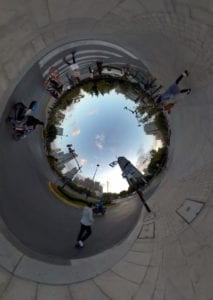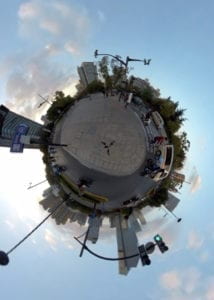Being the first ever IMA class that I have taken, VR/AR Fundamentals by Michael Naimark with Dave Santiano assisting provided some solid basis and fundamental insight into the area of Interactive Media. Working with VR more specifically, made it comprehensive to be able to produce a stereoscopic video as well as to edit and manipulate it such that an enjoyable and exciting product can be obtained.
First, by constantly keeping an eye on world updates and news in the sphere of VR/AR, it was easy to submerge into trends and to understand the basics of VR/AR medium when used as a tool of expression and communication.
Secondly, trying out our own shootings out in Shanghainese streets with Insta360 Pro camera provided by the university gave us great opportunity to be able to file and document our real-life surroundings in a 360 degree video. Some slight obstacles occurred in terms of lighting and transporting the footage to PC devices due to the heavy weight of the footage and the importance of proper stitching.
Third, the process of post-production required some in-depth understanding of manipulation of stereoscopic video and spatial audio, however with the intense help of Dave, all the iterations and work process in either After Effects or Premier Pro were remarkably possible and enjoyable. It made me think how accessible projects in VR are becoming to any amateur creators and videographers with the development of user interfaces of such video-editing softwares.
Showtime during IMA show on December 13 showed us how powerful VR medium is in terms of teleporting people to designated locations and sharing the experience and the message aimed to be displayed.

